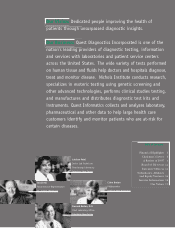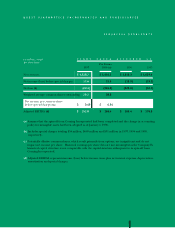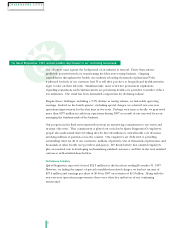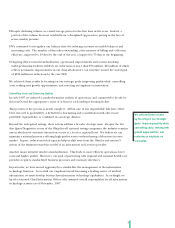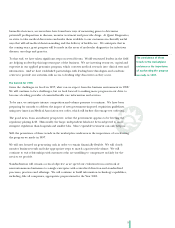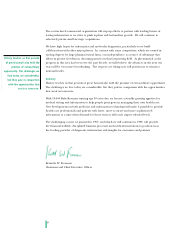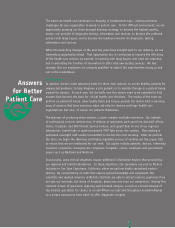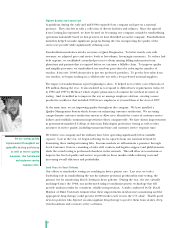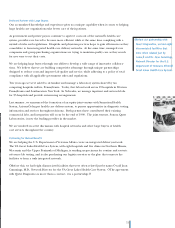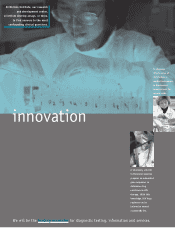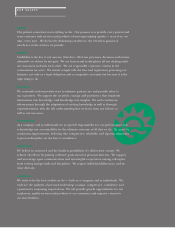Quest Diagnostics 1997 Annual Report Download - page 10
Download and view the complete annual report
Please find page 10 of the 1997 Quest Diagnostics annual report below. You can navigate through the pages in the report by either clicking on the pages listed below, or by using the keyword search tool below to find specific information within the annual report.
Highest Quality and Lowest Cost
Acquisitions during the early and mid-1990s expanded our company and gave us a national
presence. They also left us with a collection of diverse facilities and cultures. Since the spin-off
from Corning Incorporated, we have focused on becoming one company, mainly by standardizing
operations nationwide based on best practices we have identified across the company. Standardization
initiatives helped us make significant progress during the year in improving the quality of the
services we provide while significantly reducing costs.
Standardization initiatives involve everyone at Quest Diagnostics. To better match costs with
revenues, we adjusted price and service levels at low-volume, low-margin customers. To reduce bad
debt expense, we established a standard process to obtain missing billing information from
physicians and patients that is required before we can issue a billable claim. To improve quality
and simplify processes, we standardized test send-out procedures by reducing the number of
vendors from over 1,000 laboratories to just two preferred providers. To get the best value from
our vendors, we began working in a collaborative way with a few preferred national suppliers.
The impact of standardization is just beginning to show. It helped us to realize cost reductions of
$76 million during the year. It also enabled us to respond to difficult new requirements enforced
in 1996 and 1997 by Medicare which require physicians to document the medical necessity of
testing. And it enabled us to improve the way we manage employee attrition, creating a more
productive workforce that included 2,000 fewer employees at yearend than at the start of 1997.
At the same time, we are improving quality throughout the company. We have installed a
Quality Management System which focuses on enhancing customer satisfaction. We are using
comprehensive customer satisfaction surveys to allow us to identify the causes of customer service
failures and establish continuous improvement efforts company-wide. We have shown improvements
in government-mandated College of American Pathologists proficiency testing as well as other
measures of service quality, including turnaround time and customer service response time.
We believe our company and the industry have been operating significantly below available
capacity. Late in the year, we began reducing excess capacity from our national network by
downsizing three underperforming labs. In some markets we will maintain a presence through
Local Customer Centers, consisting of sales staff, couriers and logistics support and phlebotomists,
while the actual testing is performed elsewhere in the network. This will allow us to maintain or
improve the level of quality and service we provide in those markets while reducing costs and
increasing overall efficiency and profitability.
Good News for Heart Patients
Our efforts to standardize testing are resulting in better patient care. Last year, we took a
leadership role in standardizing the way the industry performs prothrombin time testing, the
primary test for monitoring blood clotting in heart patients. During the year, the test, virtually
unchanged since the 1940s, was modernized using recombinant genetic technology that will
provide uniform results for consistent, reliable interpretation. A study conducted by Dr. David
Matchar of Duke University estimates that these improvements in laboratory monitoring and the
appropriate drug therapy could prevent 40,000 strokes each year in the U.S. alone. ThatÕs good
news for patients who depend on anticoagulant drug therapy to protect them from strokes, deep
vein thrombosis and coronary artery occlusion.
8
We are seeing quality
improvements throughout our
systemÑin testing proficiency
as well as service quality
measures, like turnaround
and customer service
response time.


